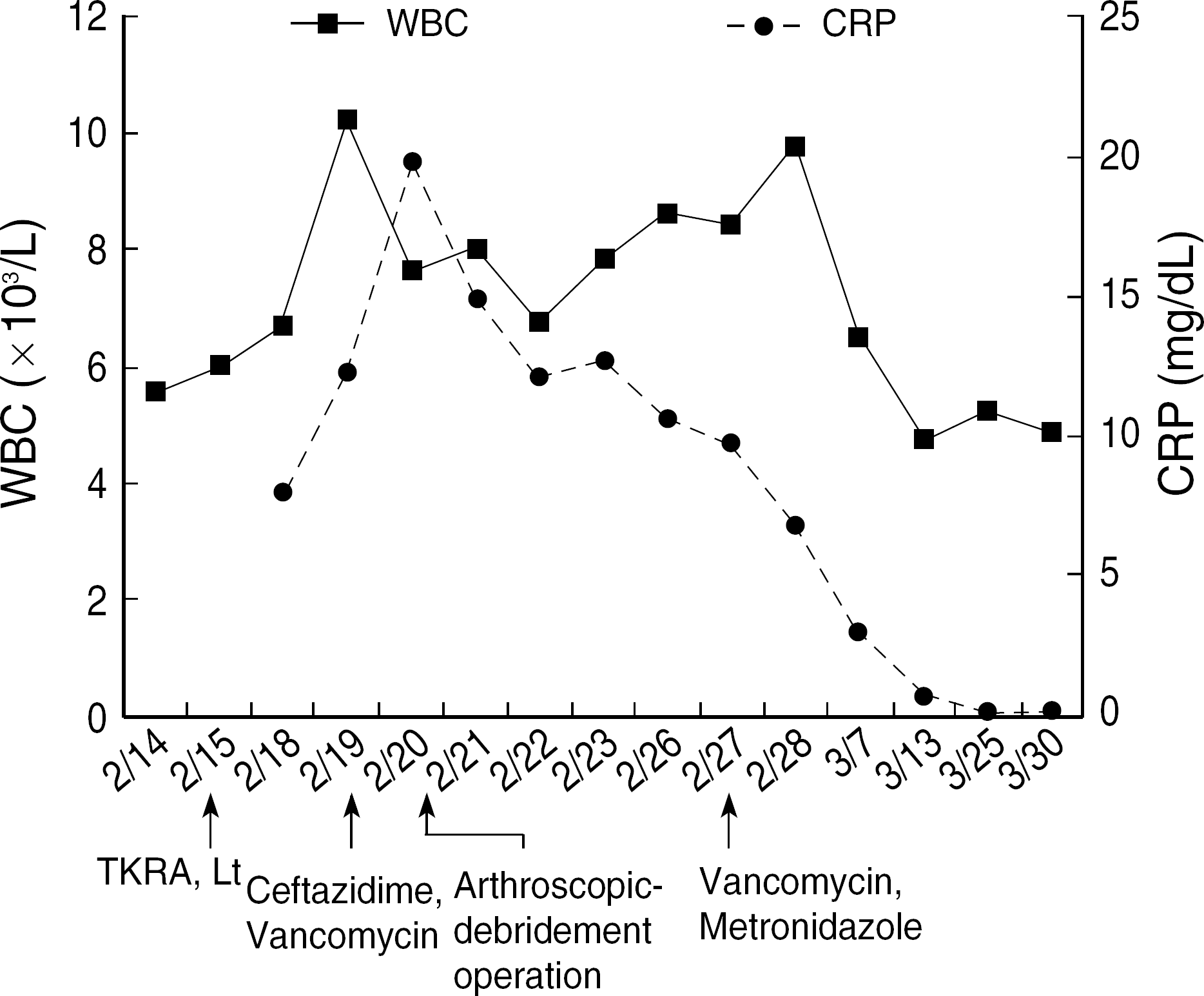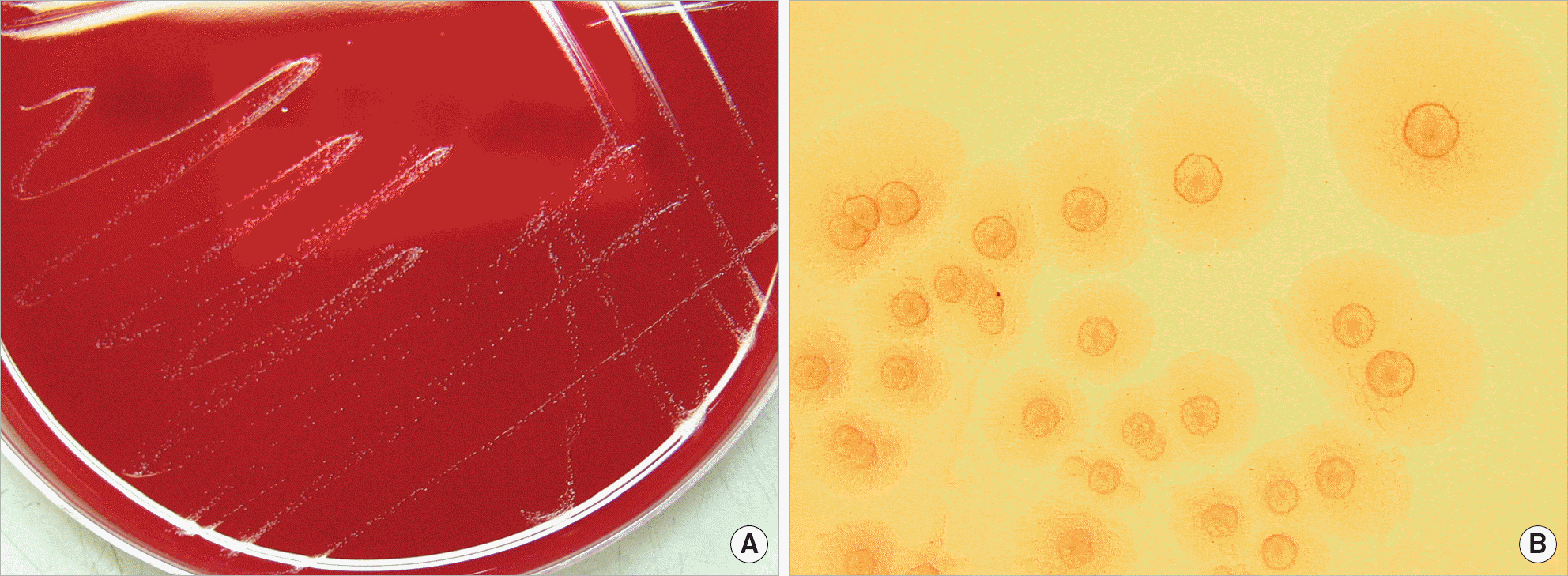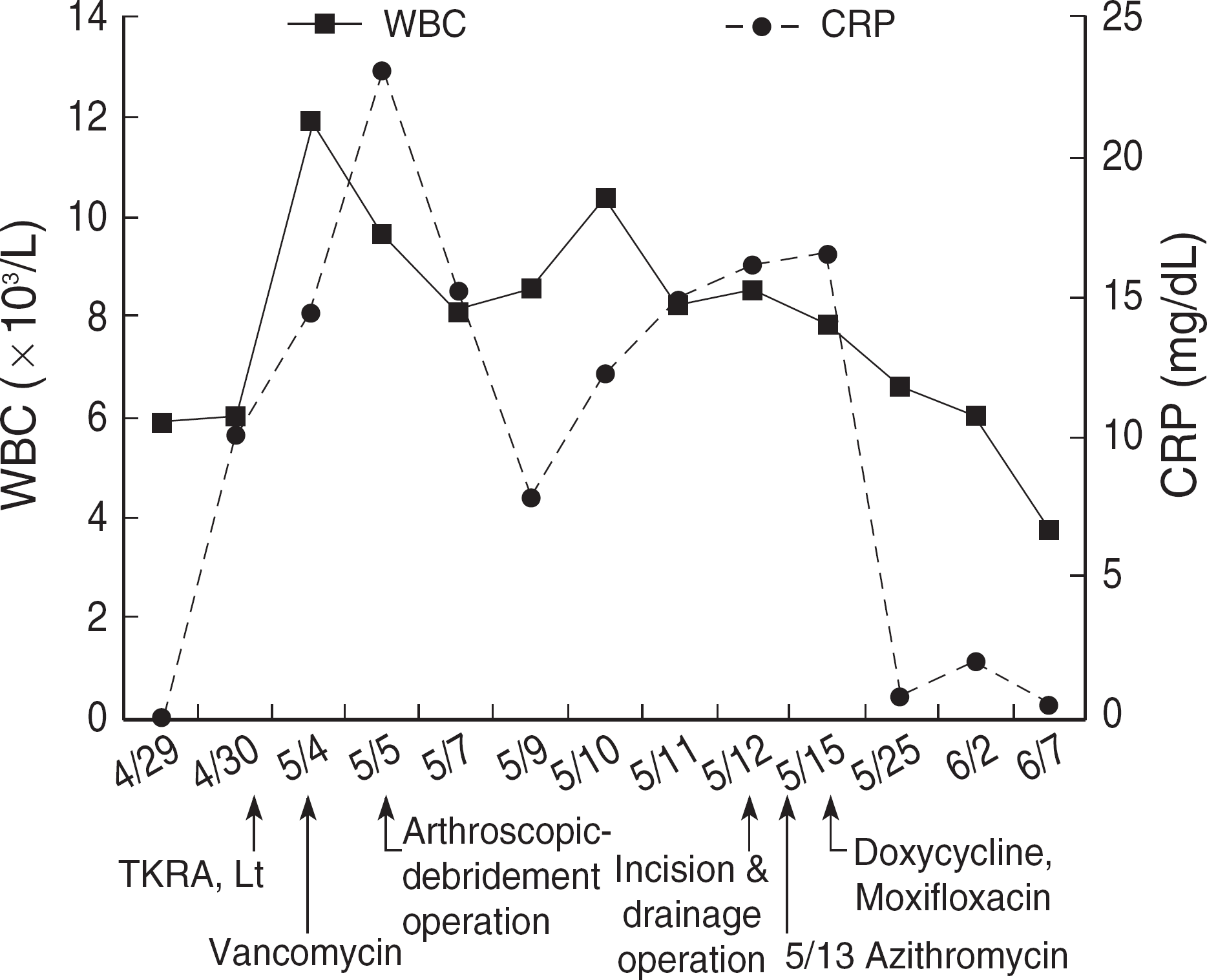Abstract
Mycoplasma hominis has been related with pelvic inflammatory illnesses and postpartum and neonatal infections. Extragenital M. hominis infections are rare, but septicemia, septic arthritis, wound infection, meningitis, and other infections in Immunocompromised patients have also been described. Here we report two cases of septic arthritis caused by M. hominis in patients following total knee replacement arthroplasty. After the surgery, the patients presented with knee pain and clinical signs of infection, such as fever, erythema and swelling on the surgical site. Arthroscopic debridement operations were performed on the surgical site. M. hominis was isolated from the joint fluid and identified by the microscopic visualization of the typical “fried-egg-type” colonies on Mycoplasma specific agar (pleuropneumonia-like organism agar). It was also confirmed by 16S rRNA sequencing. To the best of our knowledge, this is the first report of prosthetic joint infections with M. hominis in Korea.
Go to : 
REFERENCES
1.Meyer RD., Clough W. Extragenital Mycoplasma hominis infections in adults: emphasis on immunosuppression. Clin Infect Dis. 1993. 17(S):S243–9.
2.Madoff S., Hooper DC. Nongenitourinary infections caused by Mycoplasma hominis in adults. Rev Infect Dis. 1988. 10:602–13.
3.Fernández Guerrero ML., Manuel Ramos J., Soriano F. Mycoplasma hominis bacteraemia not associated with genital infections. J Infect. 1999. 39:91–4.
4.Mattila PS., Carlson P., Sivonen A., Savola J., Luosto R., Salo J, et al. Life-threatening Mycoplasma hominis mediastinitis. Clin Infect Dis. 1999. 29:1529–37.
5.Miranda C., Camacho E., Reina G., Turino J., Rodriguez-Granger J., Yeste R, et al. Isolation of Mycoplasma hominis from extragenital cultures. Eur J Clin Microbiol Infect Dis. 2005. 24:334–7.
6.Sneller M., Wellborne F., Barile MF., Plotz P. Prosthetic joint infection with Mycoplasma hominis. J Infect Dis. 1986. 153:174–5.
7.Luttrell LM., Kanj SS., Corey GR., Lins RE., Spinner RJ., Mallon WJ, et al. Mycoplasma hominis septic arthritis: two case reports and review. Clin Infect Dis. 1994. 19:1067–70.
8.Mian AN., Farney AC., Mendley SR. Mycoplasma hominis septic arthritis in a pediatric renal transplant recipient: case report and review of the literature. Am J Transplant. 2005. 5:183–8.
9.García-Porruüa C., Blanco FJ., Hernández A., Atanes A., Galdo F., Moure R, et al. Septic arthritis by Mycoplasma hominis: a case report and review of the medical literature. Ann Rheum Dis. 1997. 56:699–700.
10.Phuah CL., Javid B., Aliyu SH., Lever AM. A case of Mycoplasma hominis septic arthritis postpartum. J Infect. 2007. 55:e135–7.
11.Verinder DG. Septic arthritis due to Mycoplasma hominis. A case report and review of the literature. J Bone Joint Surg Br. 1978. 60-B:224.
12.Mécha i F., Le Moal G., Duchêne S., Burucoa C., Godet C., Freslon M. Mycoplasma hominis osteitis in an immunocompetent man. Eur J Clin Microbiol Infect Dis. 2006. 25:715–7.
13.Clough W., Cassell GH., Duffy LB., Rinaldi RZ., Bluestone R., Morgan MA, et al. Septic arthritis and bacteremia due to Mycoplasma resistant to antimicrobial therapy in a patient with systemic lupus erythematosus. Clin Infect Dis. 1992. 15:402–7.

14.Hakkarainen K., Turunen H., Miettinen A., Karppelin M., Kaitila K., Jansson E. Mycoplasmas and arthritis. Ann Rheum Dis. 1992. 51:1170–2.

15.Ko KS., Oh WS., Lee MY., Peck KR., Lee NY., Song JH. A new Microbacterium species isolated from the blood of a patient with fever: Microbacterium pyrexiae sp. nov. Diagn Microbiol Infect Dis. 2007. 57:393–7.
16.Clinical and Laboratory Standards Institute. Interpretive criteria for microorganism identification by DNA target sequencing; proposed guideline. Document MM18-P. Wayne, PA: Clinical and Laboratory Standards Institute;2007.
17.Chung HY., Chung JW., Chun SH., Sung HS., Kim MN., Kim KS. A case of erythromycin-resistant Ureaplasma urealyticum meningitis in a premature iInfant. Korean J Lab Med. 2007. 27:46–9. (정희영, 정재우, 전소현, 성흥섭, 김미나, 김기수. 미숙아에서발생한 Erythromycin 내성 Ureaplasma urealyticum. 대한진단검사의학회지 2007;27: 46-9.).
18.Waites KB., Canupp KC. Evaluation of BacT/ALERT system for detection of Mycoplasma hominis in simulated blood cultures. J Clin Microbiol. 2001. 39:4328–31.
19.Taylor-Robinson D., Bebear C. Antibiotic susceptibilities of mycoplasmas and treatment of mycoplasma infections. J Antimicrob Chemother. 1997. 40:622–30.
Go to : 
 | Fig. 1.Changes of inflammatory markers (WBC and CRP) during antibiotics treatment (Case 1). Abbreviations: CRP, C-reactive protein; TKRA, Total knee replacement arthroplasty. |




 PDF
PDF ePub
ePub Citation
Citation Print
Print




 XML Download
XML Download